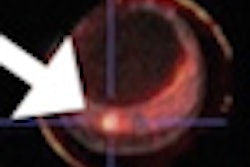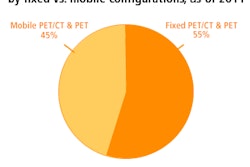Sunday, November 27 | 11:05 a.m.-11:15 a.m. | SSA18-03 | Room S505AB
Breast imaging can benefit from contrast-enhanced PET/CT, and even better results can be achieved with PET/MRI, according to a study by researchers from Kochi University Hospital in Japan.Dr. Munenobu Nogami, PhD, will present results from 27 consecutive patients with suspected breast cancer who underwent PET/CT and contrast-enhanced MRI within one week. All 27 patients received a prone PET/CT scan of the chest after a routine whole-body scan in supine position.
PET/CT scans were acquired both with and without contrast-enhanced CT. Patients also received an MRI scan.
PET/CT with no contrast achieved the lowest sensitivity at 52%. PET/CT with contrast reached sensitivity of 76%, while MRI's sensitivity was 88%. With fused PET and MR images, sensitivity also was 88%.
MRI alone achieved specificity of 78%, the lowest rating among the scan options. PET/MRI reached specificity of 89%, PET/CT with no contrast had specificity of 98%, and PET/CT with contrast resulted in specificity of 87%.
"MRI shows high sensitivity but relatively low specificity, and PET/CT, on the other hand, shows high specificity but low sensitivity in the diagnosis of breast lesions," Nogami said. "Therefore, PET/MRI covers the drawbacks of both modalities, resulting in higher sensitivity and specificity than each modality alone."
PET and contrast-enhanced CT improve diagnostic performance of PET/CT, but PET/MRI fusion images are more useful than PET/CT and MRI for diagnosing breast cancer, Nogami and colleagues concluded.
"So far, breast MRI is state of the art for diagnosis of breast lesions," Nogami added. "However, its low specificity induces unnecessary biopsies and/or operations. By using PET/MRI, it may be possible to reduce these needless interventions and improve the quality of life of the patients."
The group plans to continue its research to assess the usefulness of PET/MRI in evaluating the therapeutic effect of presurgical chemotherapy, whether survival can be predicted, and the difference in diagnostic performance between conventional PET/CT in supine and prone positions.
"These results should be useful for estimating the application of a dedicated PET/MRI scanner, which will be available in a clinical setting in near future," Nogami said.




















